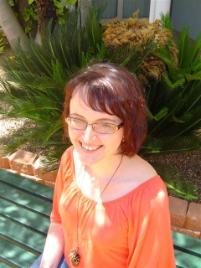Community TV benefits for regions 'not recognised'
Published on 09 November, 2009
Existing Community Television stations in Australia exclusively serve the populations living in the State capitals. There are groups based in regional centres eager to establish such services; Central Queensland has one such group...
What benefits might a local community TV service bring to the region?
Dr Wendy Davis is Convenor of the Cultural Studies and Education Special Interest Group with CQUniversity's Learning and Teaching Education Research Centre (LTERC).
She said, "TV has a huge potential to create a sense of community, whether it's a national sense as we have with the major public broadcasters, or whether it's a smaller community in a regional area, TV can shrink perceived isolation."
Dr Davis agreed the local station could be said to help to bind the community because there is a shared experience; viewers in a particular region have many shared interests, underscored by their geographical location.
She said, "We hear a lot about the negatives of television, but it does have that potential to create a sense of community in all different sizes, shapes and forms."
Of late there have been concerted efforts on the part of government and other bodies, to encourage the concept of the ‘tree change', mainly to breathe new life into small communities in danger of disappearing.
Dr Davis said, "If we're going to continue to encourage people to move into regional areas, particularly professionals like doctors, teachers and others, we need to not only provide them with good roads and other services, but also those things which help to develop a sense of belonging."
Many obstacles need to be negotiated on the way to setting up regional community-based television services, not least of which is availability of the necessary broadcast spectrum.
The federal government recently announced it had found vacant spectrum for community channels to go digital from next year, however that spectrum, and additional funding will provide 'a digital pathway to community stations in Melbourne, Sydney, Brisbane and Adelaide'.
It is not clear if similar assistance is being considered that allows for entry of regional broadcasters, who face an uphill battle to maximise their audience base, given the poor uptake of set-top boxes and digital-ready sets in regional and remote areas.
Dr Davis added that the advances in technology that we're seeing, almost on a daily basis, bode well for television in the digital age, offering "... many diverse platforms for the ways in which it can be accessed without the current bulky and expensive transmission infrastructures, such as masts and dedicated transmission sites. If people can view via their iPods, computer screens, lounge room PCs and so on, the potential for television can be even greater, it just may not be in the form we're used to today."
In terms of content, Dr Davis is concerned that " ... there seems to be a tendency for television programmers to target what might be called the lowest common denominator; they need to aim higher in terms of the quality of their productions."
The academic is concerned also that there is a lot of new and untouched writing and acting talent ‘out there', that doesn't get a look in. She said, "The digital environment offers so much for diversity in programming."
Whilst many universities feature in-house radio stations, Wendy Davis believes there's not much standing in the way of such institutions supporting a community television station, with direct benefits for students in training, journalism, acting, lighting, production, set building, and all the crafts and trades that go to make a successful station, programming local and live productions.


